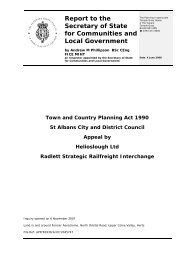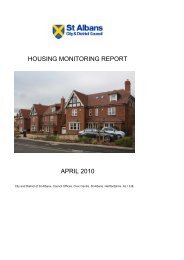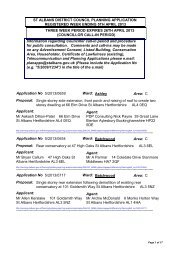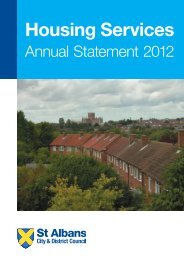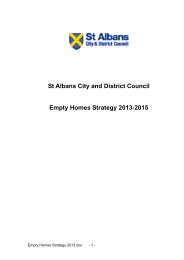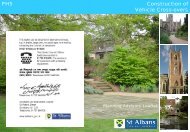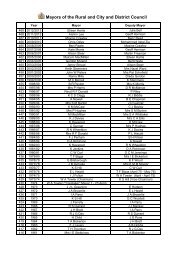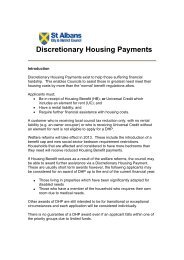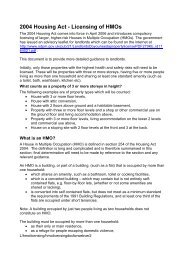RSS East Of England Plan - Broads Authority
RSS East Of England Plan - Broads Authority
RSS East Of England Plan - Broads Authority
Create successful ePaper yourself
Turn your PDF publications into a flip-book with our unique Google optimized e-Paper software.
76<br />
Section 11 Waste<br />
POLICY WM5: <strong>Plan</strong>ning for Waste Management<br />
Local Development Documents should include policies which identify the additional capacity required to manage<br />
their apportioned wastes. They should identify sites and areas suitable to accommodate the required facilities,<br />
including for the collection, sorting and storage of waste, and its treatment, recycling and disposal and sufficient<br />
landfill capacity to meet the anticipated need across the region.<br />
To minimise impacts on growth area objectives for Bedfordshire, the use of potential landfill capacity in the Marston<br />
Vale should reduce over time. New landfill development in the Marston Vale should not compromise proposals for<br />
environmental regeneration and housing development, and should only be permitted where the waste to be<br />
landfilled has been subjected to comprehensive pre-treatment, such that the maximum practicable value has been<br />
recovered, and provision is consistent with Bedfordshire’s waste apportionment in Policies WM 3 and 4.<br />
11.18 On the best available information, the <strong>East</strong> of <strong>England</strong> needs to provide up to 20 million tonnes of recovery capacity by<br />
2021. The ERM study also identified a shortfall in landfill capacity for inert waste in most sub-regions, and an uneven<br />
spread of landfill capacity for non hazardous waste with early shortfalls in Bedfordshire and Essex. Informed by the best<br />
available data, Local Development Documents should allocate an appropriate number and range of sites for waste<br />
facilities reflecting the waste hierarchy. Facilities for composting and waste minimisation processes, such as mechanicalbiological<br />
treatment and thermal energy recovery, should be encouraged.<br />
11.19 Current levels of landfill activity in Marston Vale do not sit comfortably with proposals for regeneration and environmental<br />
improvement. Imported waste from London should reduce progressively from current levels to a substantially lower level<br />
by 2015. New landfill development in the area should only accept residual wastes from comprehensive treatment<br />
processes. The necessary waste treatment facilities should be in place before any new landfill sites become operational.<br />
Any future review of imported waste apportionments should take account of the need to avoid conflict between waste<br />
management and development in the Vale.<br />
POLICY WM6: Waste Management in Development<br />
Development should be designed and constructed to minimise the creation of waste, make maximum use of<br />
recycled materials and facilitate the collection, separation, sorting, recycling and recovery of waste arising from the<br />
development and surrounding areas, where appropriate. Within major developments provision should be made for<br />
waste management facilities to enable the sustainable management of waste through innovative approaches to<br />
local waste reduction, recycling and management.<br />
11.20 New development, especially high density and mixed use, should provide for waste collection and management in its<br />
design. This will mean, for example, ensuring new homes have sufficient space for the separation, storage and efficient<br />
collection of a range of wastes for recycling or recovery. Larger developments should be designed to minimise waste<br />
production and incorporate on site provision for waste minimisation and recovery. In the key centres for development and<br />
change in particular, strategically significant development schemes should adopt innovative approaches to community<br />
waste reduction, recycling and management, such as composting. Local Development Documents, frameworks, master<br />
plans and design briefs should reflect these requirements.<br />
11.21 Construction and demolition waste represents the largest waste stream and is forecast to grow from over 12.5 m tonnes<br />
in 2002/3 to 17.5 m tonnes by 2021, ODPM survey 2003. Developers will need to account for the waste generated by<br />
their activities in their site waste management plans (mandatory for most developments from October 2007) and the<br />
majority of such waste managed on site.



